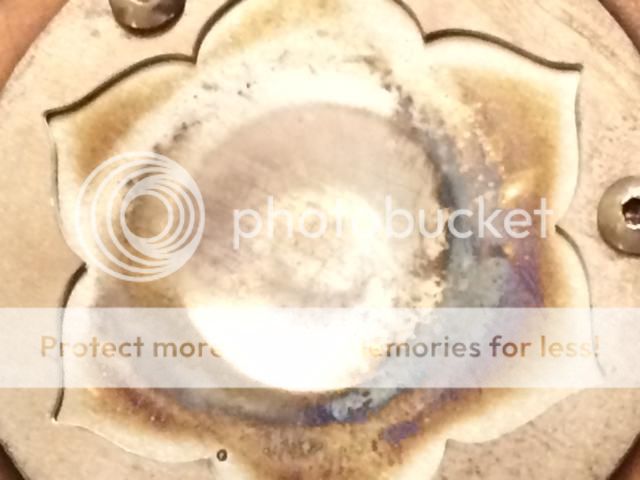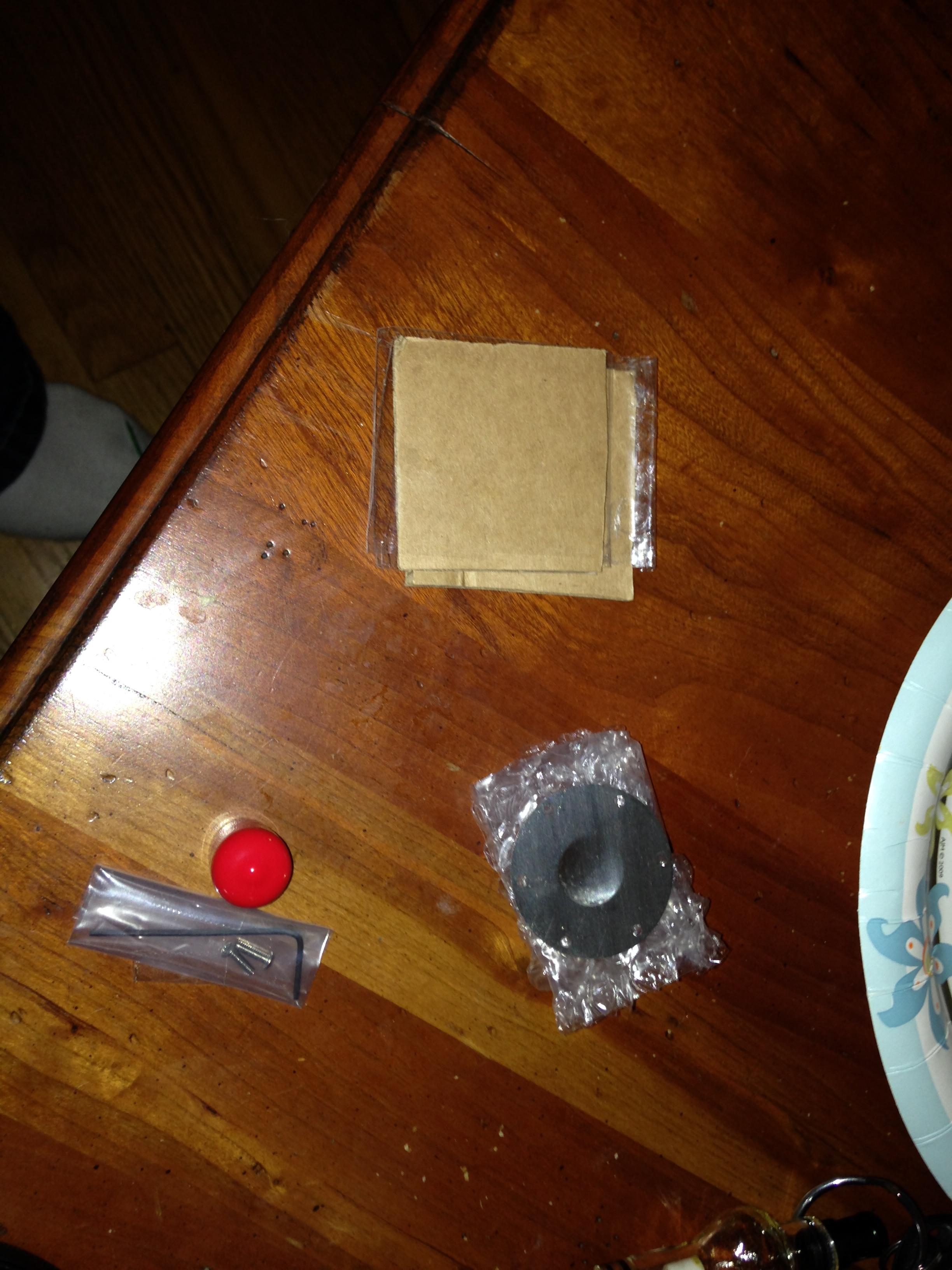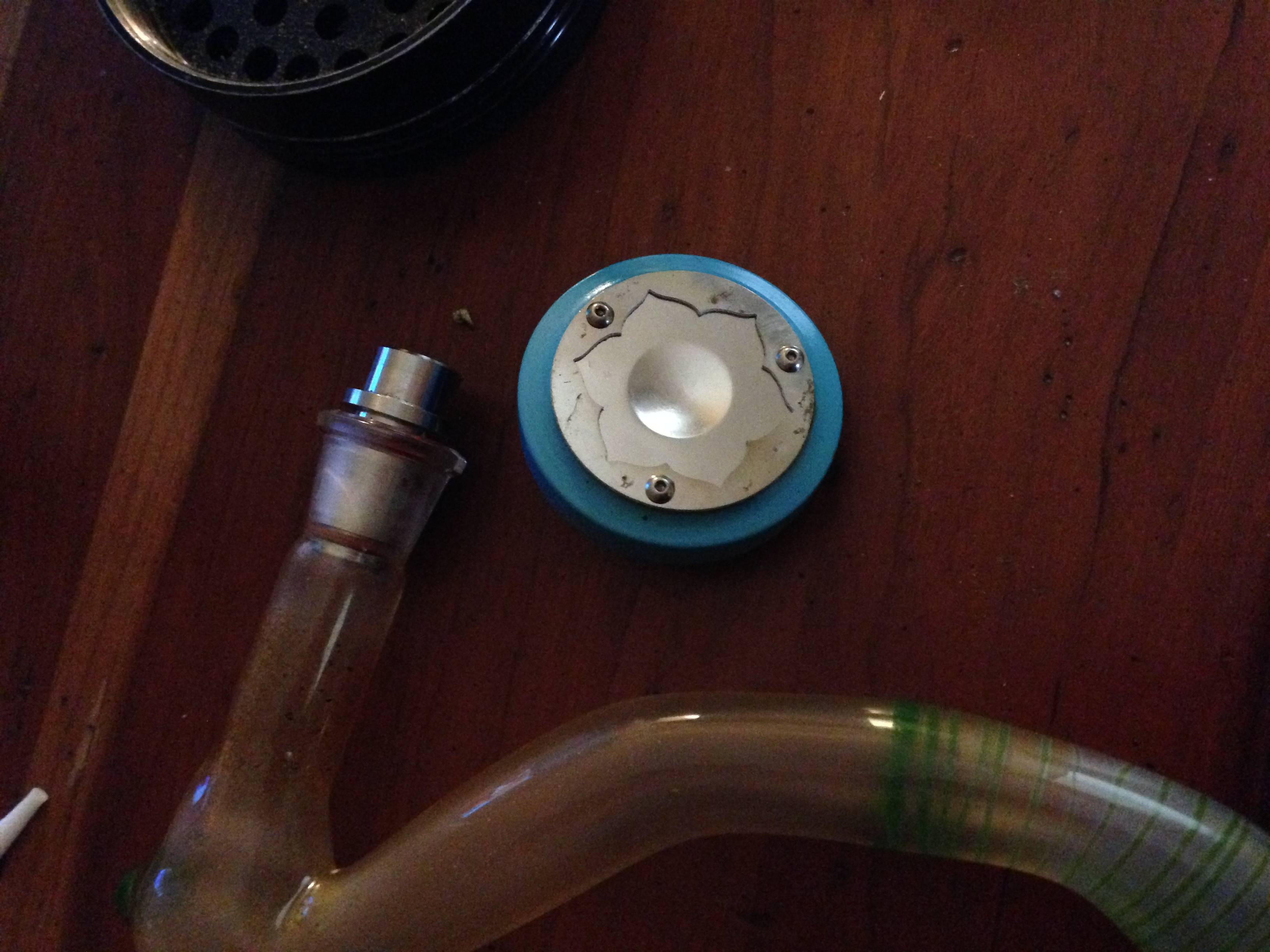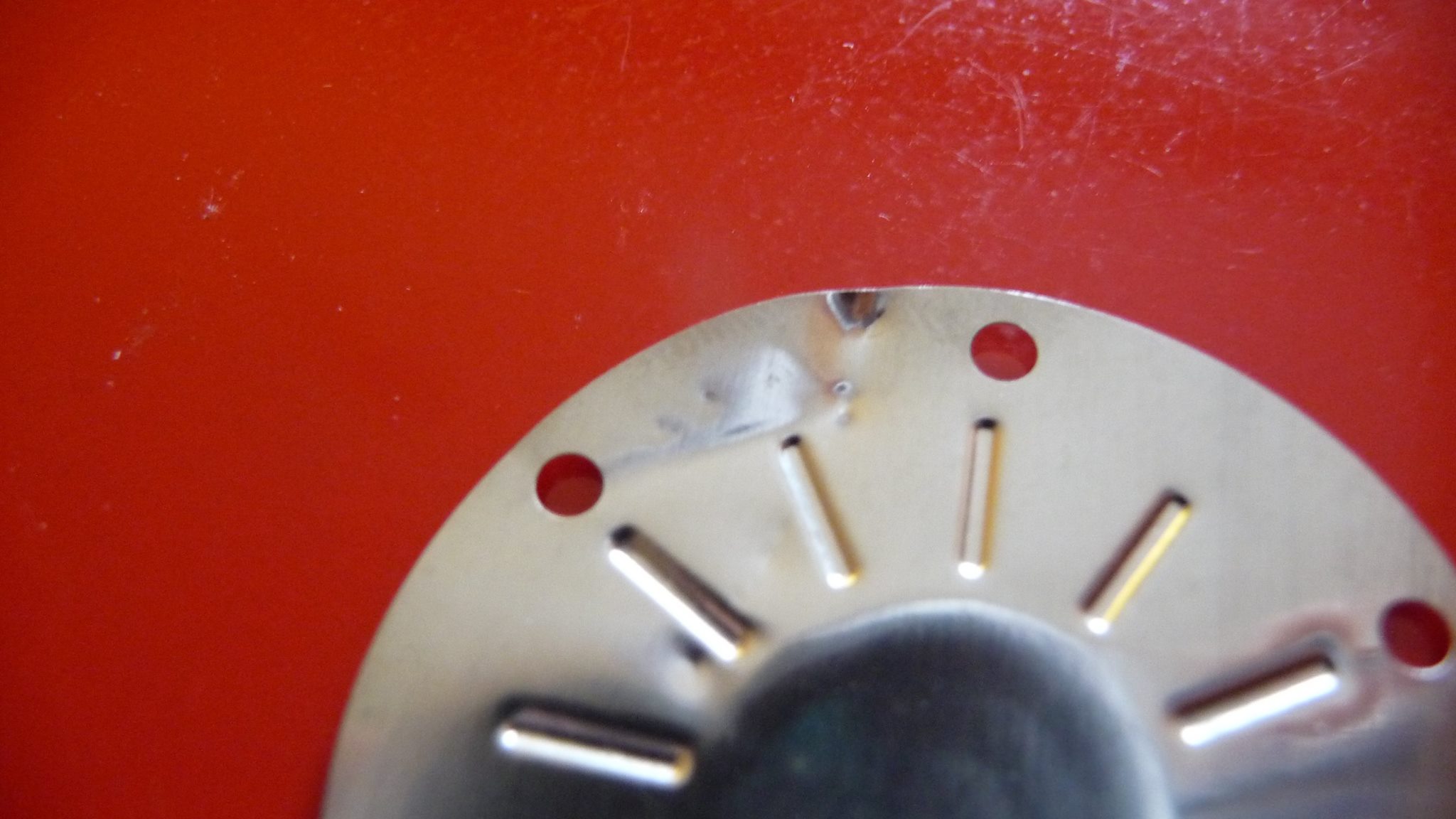-
SCAM WARNING! See how this scam works in Classifieds.
You are using an out of date browser. It may not display this or other websites correctly.
You should upgrade or use an alternative browser.
You should upgrade or use an alternative browser.
The Lotus Vaporizer
- Thread starter David and Michael
- Start date
-
- Tags
- flame powered
Fenton Mewley
A man in search of cloudier pastures
What do you guys mean by a bent plate?
Does it look like this? (very minor bending on the top, plate's from around 4/20)
Also, what is that line? It was a little concerning... If anything happens, I'm thinking that line might have something to do with it. This is the underside of the plate. No lines on the top.

Does it look like this? (very minor bending on the top, plate's from around 4/20)
Also, what is that line? It was a little concerning... If anything happens, I'm thinking that line might have something to do with it. This is the underside of the plate. No lines on the top.

jojo0420
Cloud Chaser
I also ordered a spare plate during the 4/20 sale, you guys talking of bends and whatnot made me open it up. I have the same "ripple" at 12 o'clock as @Fenton Mewley but no scratch or whatever that is. I had no other bends.
I also had only 2 screws. I agree with @FlyingLow that they aren't provided as replacements, just spares.
My current hot plate looks like 2 points of the inner triangle are developing the start of cracks, the metal puckers a little there.
Was there perhaps a change in tooling for the plates? @Max Jitter
Don't know that we will ever know the whole answer, just throwing out an idea.
If I have to start using my back up plate I will do my best to wait until there is a new design released before I get another.
Still love my Lotus!
I also had only 2 screws. I agree with @FlyingLow that they aren't provided as replacements, just spares.
My current hot plate looks like 2 points of the inner triangle are developing the start of cracks, the metal puckers a little there.
Was there perhaps a change in tooling for the plates? @Max Jitter
Don't know that we will ever know the whole answer, just throwing out an idea.
If I have to start using my back up plate I will do my best to wait until there is a new design released before I get another.
Still love my Lotus!
cybrguy
Putin is a War Criminal
Basic Instructions:
1) Adjust the lighter inner blue flame to a 1/2”- 5/8” length. This is the distance between the points of the Lotus flower on the vapor cap.
2) Preheat the plate for 2-4 seconds before inhaling. The tip of the inner flame should just touch the center of the plate.
3) Inhale much slower than you would with a traditional pipe. A full breath should take till the count of 10.
4) Make a small circle with the flame on the plate, about 3/16" diameter.
5) Pull the flame back slightly if you get a red spot on the plate. You want the plate to be on the verge of a glow.
This is a starting point. Everyone has a different technique. The most important thing is flame length. The second most important thing is flame length.
Thank you, Max. I'm still struggling a bit with higher temp hits, but I'll get there.
Gray Area
Well-Known Member
My current hot plate looks like 2 points of the inner triangle are developing the start of cracks, the metal puckers a little there.
Was there perhaps a change in tooling for the plates? @Max Jitter
Don't know that we will ever know the whole answer, just throwing out an idea
Mine does this (puckers) at one point of the triangle. No crack though yet.
The point that's affected in mine seems to be where the point of the triangle meets with the end of one of the little troughs/lines/sunbeams that are pressed into the plate.
Could this be a weak spot?
Vapodudule
Well-Known Member
one more time : to cook with a torch a material even if it is pure nickel have macro consequences/defaults such as plastic deformation so cracks will appear in time and the simplicity of lotus is brought by having a replacable piece: the plate. Great design @Max Jitter , many evolutions but metallurgy is well known now and there is always a limit in reality.
Did anyone else noticed the pattern of deformation the center of a total new plate? You can see a triangle forming on the central point representing the bondage of the plate and the screws. with multiple uses, hte pattern disappear.
My hypothesis for above-normal cracks/defaults apparition could be the dissymetry of the touching of the 3 screws.
It could be the variance in tolerance on screws holes on the plates that brings once the plate deforms
may be make them bigger or make it ovale on 1mm(long axis on a radius) to permit the plate to deform freely could save some pressure point up there.
Did anyone else noticed the pattern of deformation the center of a total new plate? You can see a triangle forming on the central point representing the bondage of the plate and the screws. with multiple uses, hte pattern disappear.
My hypothesis for above-normal cracks/defaults apparition could be the dissymetry of the touching of the 3 screws.
It could be the variance in tolerance on screws holes on the plates that brings once the plate deforms
may be make them bigger or make it ovale on 1mm(long axis on a radius) to permit the plate to deform freely could save some pressure point up there.
cityslang
A taste on the tongue
If changing a plate I would suggest tightening each screw a bit at a time and not each one all the way in one go. Should help it out with flexing and stress.
Here's a thought if the screws are not tight enough the plate may flex too much there could be a just right not too tight or too loose sweet spot?
Here's a thought if the screws are not tight enough the plate may flex too much there could be a just right not too tight or too loose sweet spot?
one more time : to cook with a torch a material even if it is pure nickel have macro consequences/defaults such as plastic deformation so cracks will appear in time and the simplicity of lotus is brought by having a replacable piece: the plate. Great design @Max Jitter , many evolutions but metallurgy is well known now and there is always a limit in reality.
Did anyone else noticed the pattern of deformation the center of a total new plate? You can see a triangle forming on the central point representing the bondage of the plate and the screws. with multiple uses, hte pattern disappear.
My hypothesis for above-normal cracks/defaults apparition could be the dissymetry of the touching of the 3 screws.
It could be the variance in tolerance on screws holes on the plates that brings once the plate deforms
may be make them bigger or make it ovale on 1mm(long axis on a radius) to permit the plate to deform freely could save some pressure point up there.
Don't see the triangle on my plate, but then again, the nasty bend in the plate left a nice dent in my plate. But that seems to get a bit 'softer' and smoother after a few sessions. However I suspect if the plate was given enough slack to expand/contract and the instructions are revised to ensure future users avoid the red hotspot, I think it might extend the lifespan of the plates. There's no reason the plate should need to be changed monthly.
Moreover, I'd be concerned about the necessity to replace the plate often. The screws strip extremely easy (nature of the material, not much that can be done aside from going bigger), and they are threaded into the wood base. Repeated replacement of the plate will cause the holes to strip eventually. It's only a question of how many times before you strip a hole and can't get a tight enough seal for proper performance.
I think if the plate needs to be replaced that frequently, they should have installed threaded inserts into each hole (wood screw outside, threaded opening to use with machine screws).
But who knows, maybe it was a bad batch of plates and MT got nervous enough to tweak the design.
If changing a plate I would suggest tightening each screw a bit at a time and not each one all the way in one go. Should help it out with flexing and stress.
Here's a thought if the screws are not tight enough the plate may flex too much there could be a just right not too tight or too loose sweet spot?
Yes, never tighten 1 screw fully! Also, I would say don't tighten too tight - you want to give the nickle a little "give", and you don't want to risk stripping the wood!
Vapodudule
Well-Known Member
There's no reason the plate should need to be changed monthly.
Moreover, I'd be concerned about the necessity to replace the plate often. The screws strip extremely easy (nature of the material, not much that can be done aside from going bigger), and they are threaded into the wood base. Repeated replacement of the plate will cause the holes to strip eventually. It's only a question of how many times before you strip a hole and can't get a tight enough seal for proper performance.
I think if the plate needs to be replaced that frequently, they should have installed threaded inserts into each hole (wood screw outside, threaded opening to use with machine screws).
But who knows, maybe it was a bad batch of plates and MT got nervous enough to tweak the design.
Yes, never tighten 1 screw fully! Also, I would say don't tighten too tight - you want to give the nickle a little "give", and you don't want to risk stripping the wood!
I disagree with you with the frequence of plate changing, you choose T (periode)= 1month wich is absurd but T=/=0
T, depends on your technique and how you treat it (storage, hit etc..). I fairly and very regularly used the lotus until T=8 months . It has been less than a year but i did not make perfect storages and perfect hitting, many overheating etc... I am ok with this figure with this application.
If you dig on the thread you will find i felt to change the plate and felt the difference of performance with equal other parameters between deformed plate and new plate.
Very good point about the metal threading instead of wood threading needed to repeatitive plate changes, i made the though during the operation but did not mention yet.
There is hope for a long lasting hot plate.

This is with 100 heat cycles.

Note that the outer edge of the indentation is still a circle.
The problem was thermal stress, as some of you said. The radial lines on the standard plate, while looking nice, stiffened the flat part of the plate and wouldn't allow it to deflect when heated. All the thermal expansion had to be absorbed in the concave indentation, which is what caused it to crack and to look strange with age.
This plain hot plate moves more than the original one but pretty much comes back to its original shape after cooling. During heating the concave part moves down and the flat part around it moves up, absorbing the expansion.
If anyone has a cracked plate, contact us through the contact section of our website and send a pic of your broken hot plate and your shipping info. We'll send you a new one ASAP.
Maybe there's a lesson here about fighting stress??

This is with 100 heat cycles.

Note that the outer edge of the indentation is still a circle.
The problem was thermal stress, as some of you said. The radial lines on the standard plate, while looking nice, stiffened the flat part of the plate and wouldn't allow it to deflect when heated. All the thermal expansion had to be absorbed in the concave indentation, which is what caused it to crack and to look strange with age.
This plain hot plate moves more than the original one but pretty much comes back to its original shape after cooling. During heating the concave part moves down and the flat part around it moves up, absorbing the expansion.
If anyone has a cracked plate, contact us through the contact section of our website and send a pic of your broken hot plate and your shipping info. We'll send you a new one ASAP.
Maybe there's a lesson here about fighting stress??
Oooo - pretty! Nice work on an improved design! I was expecting another month before I saw any updates on the plate from you!
Do I need to send another email? Or was my email last week with pictures sufficient?
Do I need to send another email? Or was my email last week with pictures sufficient?
Last edited by a moderator:
cybrguy
Putin is a War Criminal
There is hope for a long lasting hot plate.
This is with 100 heat cycles.
Maybe there's a lesson here about fighting stress??
So, this is the kind of support that is very difficult to find and deserves to be rewarded.
Thank you Max, recommendations of your product will likely increase significantly as a direct result of your company's methods and follow through.

I knew I bought the right pipe...
I'm with you on "stress" too...

VapeNStone
Mark
Ok got my replacment plate already. Looks just like the one max posted above. I'll change it later tonight.
VapeNStone
Mark
Yes it's just the plate itself nothing else is changes besides the look. Oh and they listened to everyone about the packaging.

EDIT: and then all installed


EDIT: and then all installed

Last edited:
Please, another email.Oooo - pretty! Nice work on an improved design! I was expecting another month before I saw any updates on the plate from you!
Do I need to send another email? Or was my email last week with pictures sufficient?
Unisonruss
Well-Known Member
@Max Jitter I just ordered a replacement plate kit, and it's been shipped as of the 12th. What are the odds of swapping out for the newest plate? Haven't arrived in the mail yet, but I'm assuming it's the old one?
Ask again after the replacement plate cracks.@Max Jitter I just ordered a replacement plate kit, and it's been shipped as of the 12th. What are the odds of swapping out for the newest plate? Haven't arrived in the mail yet, but I'm assuming it's the old one?
Bvapst
Well-Known Member
So great !! Big up max ! I'm looking forward about reviews ! VapeNStone is here...
Indeed the now old plate was more esthetic with the lines. But functionality go over esthetic for me. If only I would have been more patient...I wanted to order direct from Mendocino and I should have do !Probably I'll order the new plate and leave my bent spare plate as an "emergency spare".
Anyhow I don't have a cracked plate and my intent to open it was for other reasons. I'll definitely be buying a new Lotus with upgraded threads.
I'll agree with others about tightening screw one by one repetitively and not fully at once That's what I did, but I sucked and the end of one of them, so be careful. Maybe using a good hex wrench would be better too...
I got my custom "elbow glass" (14mm joint) to connect with a short stem (ala flashvape or LB). Intent is to have an all glass really pocket-able pipe for the Lotus. Of course both elbow aren't at the size I asked..but one of them is working.. I'll show pictures soon !
EDIT : daily driver since 5 month here as well (have it since 7 months).
Indeed the now old plate was more esthetic with the lines. But functionality go over esthetic for me. If only I would have been more patient...I wanted to order direct from Mendocino and I should have do !Probably I'll order the new plate and leave my bent spare plate as an "emergency spare".
Anyhow I don't have a cracked plate and my intent to open it was for other reasons. I'll definitely be buying a new Lotus with upgraded threads.
I'll agree with others about tightening screw one by one repetitively and not fully at once That's what I did, but I sucked and the end of one of them, so be careful. Maybe using a good hex wrench would be better too...
I got my custom "elbow glass" (14mm joint) to connect with a short stem (ala flashvape or LB). Intent is to have an all glass really pocket-able pipe for the Lotus. Of course both elbow aren't at the size I asked..but one of them is working.. I'll show pictures soon !
EDIT : daily driver since 5 month here as well (have it since 7 months).
papafuzzers
Member
Holy hairy halibut, Maxman! What amazingly quick response time the Mendo team has, just simply a thrill watching this thread from the sidelines! Now, I'm really glad I waited to pick one up.
Curious though: @ Max
Are the new plates reserved only for cracked ones as replacements?
And/or will the lotus now be shipping with the longer lasting hot plate?
Can I request it specifically on the order for assurance?
Thanks!
And again, outstanding work. The lotus excels in function from design and continues to provide five star service since day one.
I love the symbiotic relationship that is the lotus and her audience
Curious though: @ Max
Are the new plates reserved only for cracked ones as replacements?
And/or will the lotus now be shipping with the longer lasting hot plate?
Can I request it specifically on the order for assurance?
Thanks!
And again, outstanding work. The lotus excels in function from design and continues to provide five star service since day one.
I love the symbiotic relationship that is the lotus and her audience

VapeNStone
Mark
I have been through about 3 bowls so far and idk about it. It seems to start making vapor almost instantly but I seem to be scorching to one side. Doesn't seem to be very uniform. Maybe I need to turn my lighter down? Needs more testing!



